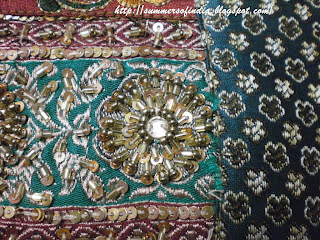Diwali the festival of lights brings happiness across the country irrespective of regions, languages, states. It is celebrated by all. It is the time for bonding, enjoying, remembering departed souls and lots more.
This is the time to give gifts to near and dear ones, friends relatives, employees - in short to one and all we want to say thank you. There are so many gifts to choose from. Candles and lamps are one of the most chosen gifts and also most appropriate for the occasion. How about some designer Diyas that to lovingly made by us? Our love and affection for the persons whom we gift these shines through our efforts of creation.
Oh by the way down South we light lamps every day in the month of Kartik. We celebrate the Purnima (Full Moon) of Kartika as an auspicious occasion, fasting, decorating our homes with earthen ware lamps like we do on Diwali. Finally on the new moon day we float the lighted lamps in rivers, lakes or such water bodies as culmination of our month long prayers. It is considered as very pious to give a lighted lamp (silver, gold or clay) to a Brahmin any time during this month.
So learn with me in creating some simple designer diyas.
Require:
Terracotta or earthen ware lamps
Paints and brushes
Water
An old news paper
First of all buy some terracotta or earthen ware lamps (Diyas) available in different sizes and shapes. These days you get so much variety.
You can use enamel paints. But the variety in acrylic or fabric paint colours is very wide. You can choose from ordinary, pearl, metallic, glitters etc. You can also use glitter powders, 3D tubes or cones for decoration. These colours are also easy to handle. You can just add a few drops of water (or medium).
Put all the lamps in a tub and pour water enough to cover them by good few inches. It is better to soak them over night. This soaking has to be done whether these lamps or painted or not. If not they soak away all the oil poured into them. Similarly if soaked we can paint them nicely and evenly.
If not 5-6 hours. Then remove them and put them face down for an hour or so and then stand them right for an hour. Now they are ready to paint. Paint them in colours of your choice Add dots, stripes after the paint dries off or dust them with glitter powders (when the paint is still damp). For decorations of 3D effect, use 3D paints which are available tubes of plain, metallic and glitters.
Red Yellow and Green are considered as auspicious colours. You can use other colours too except black. Don't use Black. Gold Silver, Bronze and other metallic colours give a nice affect.
Let them dry out completely. Wrap them in colourful gift wrappers.
Here are some I am working on.
These need a few more touches. I have to paint the outer sides (or under sides). I don't paint the bottom as it cannot be seen. I have used pearl and metallic shades. Actually I had made so many, which were packed and gifted. I could not photograph them.
Will post more in my next post...so keep watching....

















